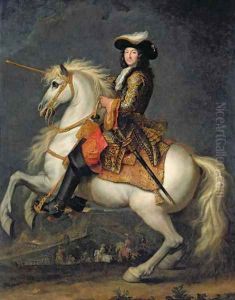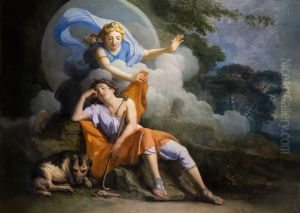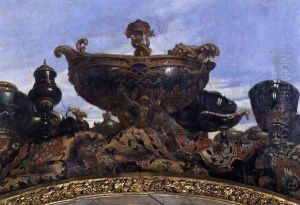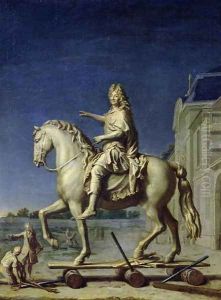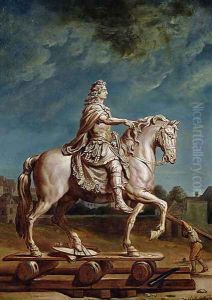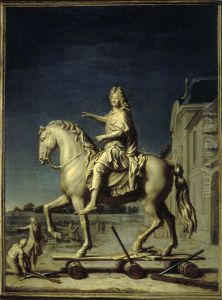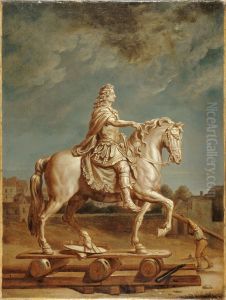Rene-Antoine Houasse Paintings
René-Antoine Houasse was a French painter associated with the Baroque and Classicism movements, born in 1645 in Paris. He was a pupil of Charles Le Brun, the chief painter under King Louis XIV, and his work was significantly influenced by his mentor's style. Houasse's oeuvre is characterized by its classical subjects, and he was known for his adept use of color and skillful depiction of light.
During his career, Houasse served the French royal family and worked on various projects for the decoration of the Palace of Versailles. His contributions included designs for the Grand Appartement du Roi and the Appartement de la Reine. He created numerous frescoes and oil paintings that reflected the grandeur and opulence of the French court.
Houasse became a member of the Royal Academy of Painting and Sculpture in 1676, and later on, he was appointed as the director of the French Academy in Rome, a prestigious position that allowed him to influence the development of French art. His role as the director was to supervise the young French artists who came to Rome to study the masterpieces of antiquity and the Renaissance.
Houasse's work was well-regarded by his contemporaries, and he was considered an accomplished history painter, a genre that was given the highest rank among the painting subjects of his time. Despite his success, René-Antoine Houasse's fame diminished after his death in 1710, and he became less known compared to other artists of his era. Nevertheless, his paintings remain as a testament to the classical French style that dominated the latter part of the 17th century.
